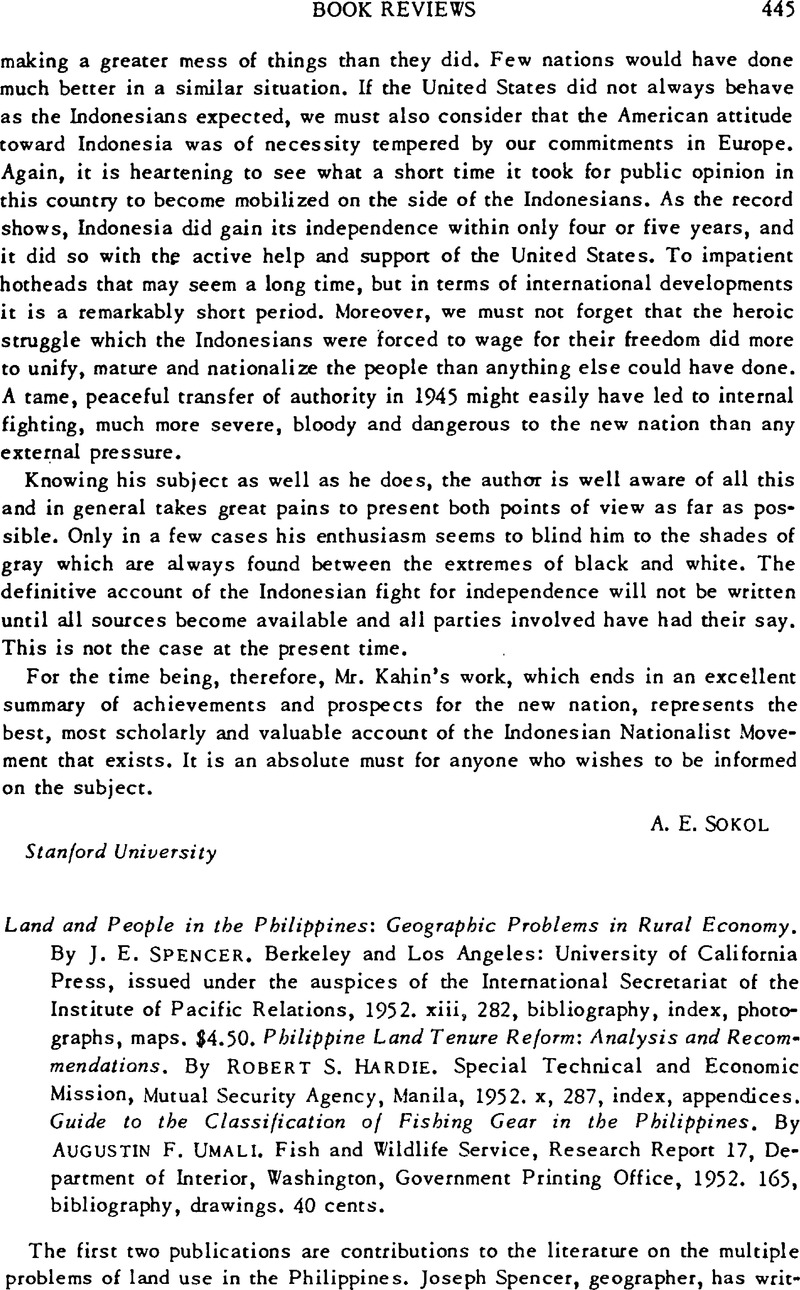No CrossRef data available.
Published online by Cambridge University Press: 23 March 2011

1 Fred, Eggan, “The Philippines and the Bell Report,” Human Organization, Vol. 10, No. 1Spring, 1951, pages 16–21.Google Scholar
2 In a speech in Caoayan, near Vigan, Ilocos Sur. Philippine Free Press, Vol. XLIV, No. 1, 3 January, 1953, pages 52.Google Scholar
3 Locsin, Teodoro M., “Land Reform, The Problem, The Recommendations, The Objections,” Philippine Free Press, Vol. XLIV, No. 2, 10 01, 1953, page 2.Google Scholar
4 A recent MSA-PHILCUSA report has been released on this problem: Report and Recommendations Concerning Agriculture Credit in the Philippines by John L. Cooper, 1952Google Scholar, mimeographed, 88 pages. As of the first of the year, the Central Bank had approved a number of applications for the establishment of rural banks in Laguna, Rizal, Pangasinan, Cebu City, and Batangas to list a few of the locations. Whether or not their fate will be that of previous attempts to extend credit to rural areas only the future can tell. It is reported that Viva Zapata, a film dealing with agrarian rebellion in Mexico, has not been permitted to be shown in the Philippines.
5 Juridical person is defined as any legal person, inclusive of, but not limited to, corporations, legal partnerships, and private schools, hospitals, churches, organizations that may own or operate land.